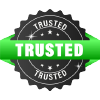Automotive logistics market in the Asia Pacific is expected to grow from US$ 87.59 Bn in 2018 to US$ 170.24 Bn by the year 2027 with a CAGR of 7.4% from the year 2019 to 2027.
The increase in the number of manufacturing units for automobile and strategic partnerships among logistics providers and automobile manufacturers are the key factors driving the growth of the automotive logistics market. Moreover, the automobile manufacturers pose substantial business opportunities for automotive logistics providers, which in turn is anticipated to boost the automotive logistics market growth in the near future. The automotive industry has been one of the prime contractors of logistics companies over the years, and the latter has benefitted massively from the automotive industry. The automotive industry players continuously engage themselves in partnering with logistics partners to transport their components as well as finished vehicles from one location to another. With the increasing partnerships, automobile manufacturers and component manufacturers are facilitated with better control in managing inbound as well as outbound transportation service, shorter lead times, and timely deliveries. The increasing number of partnerships among automotive manufacturers and logistics companies are positively impacting on the growth of automotive logistics market. The increasing number of partnerships among the automobile manufacturers and logistics partners are enabling the car makers to manage their Complete Knock Down (CKD), Medium Knocked Down (MKD), and Semi Knock Down (SKD) vehicle parts and components to transport to different locations. This factor is heavily boosting the automotive logistics market to propel over the year. The same trend is anticipated to create lucrative opportunities for logistics companies operating in the automotive industry to gain profit.
The component sector led the automotive logistics market in the year 2018 with the highest market share and is expected to flourish its dominance during the forecast period. On the other hand, the tire segment is anticipated to be the fastest growing segment in the APAC Automotive logistics market by sector during the forecast period. The tire manufacturer faces different challenges in the supply chain, such as poor forecast mechanism and visibility, which might result in inadequate inventory management. However, rising production of vehicles and tires go hand in hand and are direct interlinked with each other. Moreover, an increase in cross country trade and transportation has upraised demand for tire manufacturing and replacements over the years, which is fostering the demand for tires. Growth in tire manufacturing would accelerate the need for the logistics industry as well.
China dominated the automotive logistics market in 2018 and is expected to dominate the market with the highest share in the Asia Pacific region through the forecast period. Countries of the APAC region continue to march towards economic growth and development, the automotive industry is anticipated to play a vital role in terms of contributing towards GDP. This is further expected to nurture the economies of India, China, Japan, and South Korea. The figure given below highlights the revenue share of the rest of Asia Pacific in the automotive logistics market in the forecast period:
Rest of Asia Pacific Automotive Logistics Market Revenue and Forecasts to 2027 ( US$ Mn)
- This FREE sample will include data analysis, ranging from market trends to estimates and forecasts.
ASIA PACIFIC AUTOMOTIVE LOGISTICS MARKET SEGMENTATION
By Type
- Outsourcing
- Insourcing
By Services
- Transportation
- Warehousing
- Packaging Processes
- Integrated Service
- Reverse Logistics
By Sector
- Passenger Vehicle
- Commercial Vehicle
- Tire
- Component
By Country
- Australia
- China
- India
- Japan
- South Korea
- Rest of Asia Pacific
Automotive logistics Market - Companies Mentioned
- CEVA Logistics AG
- DB Schenker (Deutsche Bahn AG)
- DHL International GmbH (Deutsche Post AG)
- DSV A/S
- GEODIS
- KUEHNE + NAGEL International AG
- Nippon Express Co., Ltd.
- Ryder System, Inc.
- XPO Logistics, Inc.
- United Parcel Service, Inc.
Asia Pacific Automotive Logistics Report Scope
| Report Attribute | Details |
|---|---|
| Market size in 2018 | US$ 87.59 Billion |
| Market Size by 2027 | US$ 170.24 Billion |
| CAGR (2019 - 2027) | 7.4% |
| Historical Data | 2016-2017 |
| Forecast period | 2019-2027 |
| Segments Covered |
By Type
|
| Regions and Countries Covered | Asia-Pacific
|
| Market leaders and key company profiles |
|
- Historical Analysis (2 Years), Base Year, Forecast (7 Years) with CAGR
- PEST and SWOT Analysis
- Market Size Value / Volume - Regional, Country
- Industry and Competitive Landscape
- Excel Dataset
Recent Reports
Testimonials
Reason to Buy
- Informed Decision-Making
- Understanding Market Dynamics
- Competitive Analysis
- Identifying Emerging Markets
- Customer Insights
- Market Forecasts
- Risk Mitigation
- Boosting Operational Efficiency
- Strategic Planning
- Investment Justification
- Tracking Industry Innovations
- Aligning with Regulatory Trends





















 Get Free Sample For
Get Free Sample For